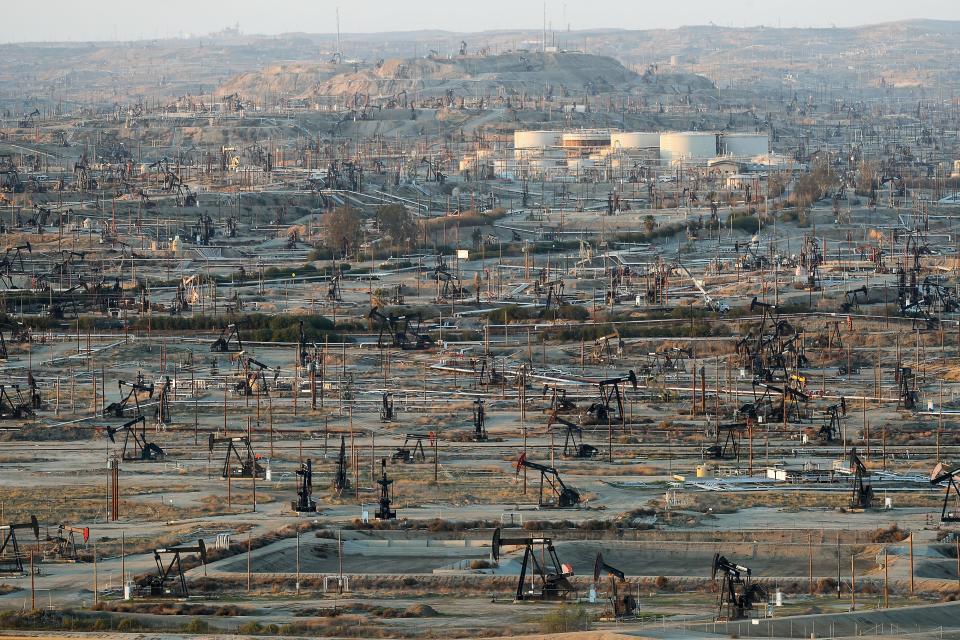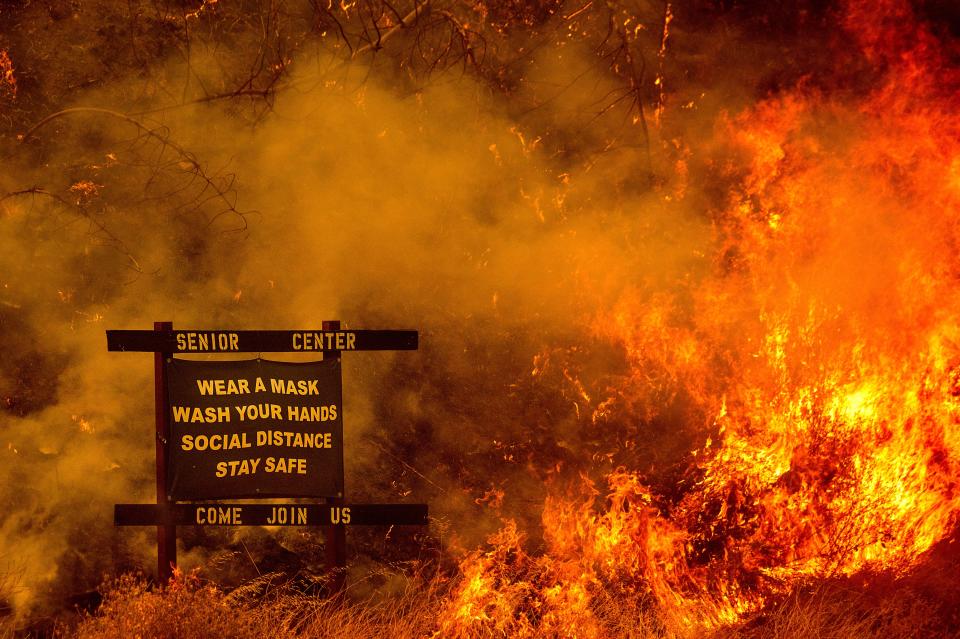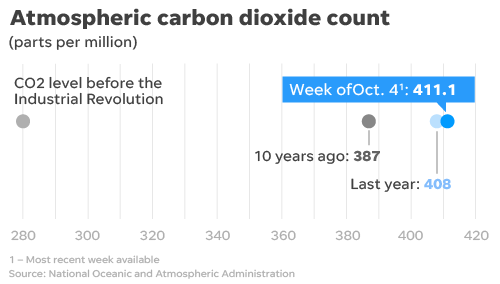Climate Point: Low-emission metal, green hydrogen and electric buses
Welcome to Climate Point, your weekly guide to climate, energy and environment news from around the Golden State and the country. In Palm Springs, Calif., I’m Mark Olalde.
COVID-19 numbers in the U.S. are once again trending very much in the wrong direction. We first hit a peak number of cases in April. Then we hit a higher peak in July. Now, after making progress, we're going backwards, with the number of new cases identified each day edging back toward the summer high.
Against that backdrop, USA Today Network reporters teamed up to dig into inequities across the country that are fueling the virus' spread through low-income communities and neighborhoods predominantly populated by people of color. Too often, we're seeing that environmental woes and public health are intertwined. In this must-read series, reporters found that factors such as proximity to heavily polluting industries seem to be making the pandemic worse.

Here's some other important reporting....
MUST-READ STORIES
Can green go blue? The jury's still out on hydrogen's place in the clean-energy world, as forming hydrogen gas is an energy-intensive process that can come with heavy carbon emissions. But there is "green hydrogen," where hydrogen is pulled from water using power from renewables. If that can be scaled, it could be an important slice of a green future. Bloomberg reports that Spain recently committed $10.5 billion to spur development in this field. In related news, CNBC reports that a hydrogen fuel cell plane with room for several passengers flew a maiden trip, signaling another step forward in the use of hydrogen for power.
Uprooted. For reasons ranging from long-standing legal rights to an often traditional connection to the area, indigenous land holders are one of the strongest defenses against widespread development. But that truism is losing some of its hold in the Amazon, where Mongabay reports a new study found mining now covers more than 20% of indigenous land. While in some cases it's indigenous groups living in poverty who are doing the mining themselves, in more instances the disparity comes from federal governments loosely enforcing land rights and providing minimal policing of land appropriation.
When the wells run dry. We're at a turning point in the history of oil and gas. Even petroleum companies predict we've hit — or aren't far off from — peak oil, which is the moment demand begins to finally drop. As this global shift coincides with temporary demand drop due to COVID-19 and an ill-timed price war, the name of the game is bankruptcy, with dozens of companies going under recently. For The Desert Sun, I've been tracking California Resources Corp., which is teaching investors some hard lessons. It was given the green light to emerge from bankruptcy this week, but how long will it last? Two states east, the New Mexico Political Report writes that its state's oil and gas companies are also struggling, but the feds are buying their corporate debt even with no immediate rebound in sight.

POLITICAL CLIMATE
Bidding for Santa Fe. The Albuquerque Journal is out with a dive into the latest campaign finance reports around the Land of Enchantment. The newspaper found that about a third of all political donations came from Chevron. The money went to Democrats and Republicans alike, and the state with a Democratic trifecta continues having trouble kicking a historical reputation of doing the industry's bidding. Other large petroleum companies including Occidental Petroleum and ConocoPhillips were also major donors.
It's electric. Clean Technica reports that Anaheim will become California's first city to employ an all-electric fleet of buses. The city's 46 new electric buses will pull a quarter of the power they need from a solar canopy over their own parking lot. This comes as Democrats in the Golden State are pushing to electrify many sectors, transportation key among them, in response to climate change.
Judicial juke. A colleague of mine in the environment reporting world — Chris D'Angelo of HuffPost — recently tweeted the perfect summation of Amy Coney Barrett's nomination hearing for a spot on the Supreme Court. "If someone begins their answer to a climate question with 'I'm certainly not a scientist,' brace yourself for some denial," he wrote. The deeply conservative justice, who is being pushed through a nomination process weeks before the election, is expected to be no ally to the environment. Ellen Knickmeyer of AP digs into Barrett's deflection, explaining how the judge's answer is a soft form of climate denial.
CLIMATE CHANGE CHECK-IN
Sue level rising. Yet another shot has been fired in the legal barrage against oil and gas companies based on claims relating to climate change. Hawaii News Now reports that Maui County filed a suit on Monday against 20 fossil fuel companies, alleging they hid the dangers of their products. According to the story, "Maui county says as a result of climate change ocean levels are rising (and) the wildfire season is now year-round."
Marketing metal. Even though the shift from fossil fuels to renewables in the energy sector gets the lion's share of the attention, there are myriad parts of the economy that need to be decarbonized, from transportation to home cooking. The Wall Street Journal profiles one of the world's largest aluminum manufacturers that uses a low-carbon process in energy-intensive smelting. Although the idea is good for humanity, it's yet to pay economic dividends. There's not a separate, higher price incentivizing the production of this cleaner form of the metal, highlighting how market-based approaches only go so far in pushing industries to go green.
Fueling the flames. ProPublica is out with another analysis of wildfires during California's record-setting season. The news isn't great. As the climate continues to change, the number of dangerous fall fire weather days — which the publication describes as "days with high temperatures, low humidity and high wind speeds" — will double in some parts of California by the end of the century. That science appears to have little sway over President Donald Trump, though, who this week blocked disaster aid requested by California. The Los Angeles Times reports that it's unclear if the decision was purely political, although Trump has threatened the state with this unusual move before.

AND ANOTHER THING
Solar is heating up. The International Energy Agency published its World Energy Outlook 2020 earlier this week, and it's a must-read for climate and energy nerds everywhere. If reading the 464-page document is too hardcore for you, no worries, Carbon Brief already dug into it for us. Here's some good news. IEA has found that, in many countries, building new solar will provide the cheapest electricity in history. On the fossil fuel side, IEA — which is usually relatively bullish on hydrocarbons — says that oil isn't done just yet with peak oil having not quite arrived. Coal, though, is in "structural decline."
Scientists agree that to maintain a livable planet, we need to reduce the atmospheric carbon dioxide concentration back to 350 ppm. We’re above that and rising dangerously. Here are the latest numbers:

That’s all for now. Don’t forget to follow along on Twitter at @MarkOlalde. You can also reach me at molalde@gannett.com. You can sign up to get Climate Point in your inbox for free here. And, if you’d like to receive a daily round-up of California news (also for free!), you can sign up for USA Today’s In California newsletter here. The numbers aren't looking good...mask up! Cheers.
This article originally appeared on USA TODAY: Climate Point: Low-emission metal, green hydrogen and electric buses

